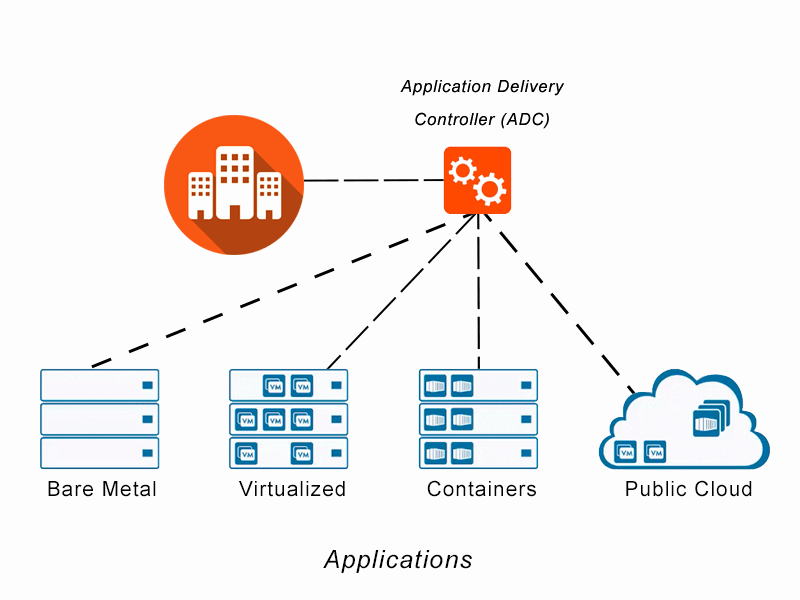Introduction
In today’s fast-paced digital landscape, businesses are continually seeking ways to enhance their operations and deliver superior digital experiences to their customers. One of the key technologies driving this transformation is the Application Delivery Platform (ADP), commonly referred to as an Application Delivery Controller (ADC). This article explores how ADCs are revolutionizing business operations, their impact on digital experiences, and why they are becoming indispensable for modern enterprises.
What are Application Delivery Platforms (ADCs)?
Definition and Functionality
Application Delivery Platforms, or ADCs, are advanced network devices that optimize the delivery of applications across various networks. They perform critical functions such as load balancing, traffic management, and security enforcement, ensuring that applications run smoothly and efficiently. ADCs act as an intermediary between the users and the servers, distributing application traffic to prevent server overloads and improve response times.
Key Features of ADCs
- Load Balancing: ADCs distribute network traffic evenly across multiple servers, ensuring no single server becomes overwhelmed. This leads to improved application availability and reliability.
- Application Acceleration: By optimizing data flow and reducing latency, ADCs enhance application performance, providing users with faster and more responsive digital experiences.
- Security: ADCs offer robust security features, including SSL offloading, DDoS protection, and Web Application Firewalls (WAF), safeguarding applications from various cyber threats.
- Traffic Management: ADCs manage and prioritize traffic based on predefined policies, ensuring critical applications receive the necessary resources.
Transforming Business Operations with ADCs
Enhancing Digital Experiences
One of the primary ways ADCs transform business operations is by significantly enhancing digital experiences. In an era where user expectations are at an all-time high, businesses must ensure their applications are fast, reliable, and secure. ADCs play a crucial role in meeting these demands by optimizing application performance and minimizing downtime.
- Improved Responsiveness: By balancing the load and optimizing data paths, ADCs reduce latency, resulting in quicker response times for users. This is particularly vital for businesses that rely on real-time applications, such as e-commerce platforms and financial services.
- Seamless Scalability: As businesses grow, so do their application demands. ADCs enable seamless scalability by efficiently managing increased traffic and ensuring applications remain responsive under heavy loads.
Boosting Operational Efficiency
ADCs not only enhance digital experiences but also significantly boost operational efficiency. By automating various network functions and optimizing resource utilization, ADCs help businesses streamline their operations and reduce operational costs.
- Resource Optimization: ADCs ensure optimal use of server resources by distributing traffic intelligently. This reduces the need for additional hardware and lowers energy consumption.
- Automation and Simplification: ADCs automate many network management tasks, such as traffic routing and security enforcement, reducing the workload on IT teams. This allows IT staff to focus on more strategic initiatives rather than routine maintenance tasks.
The Impact of ADCs on Security
Strengthening Application Security
In an increasingly digital world, application security is a top concern for businesses. ADCs provide comprehensive security features that protect applications from a wide range of threats.
- SSL Offloading: ADCs handle the encryption and decryption of SSL/TLS traffic, offloading this resource-intensive process from the servers. This not only improves server performance but also enhances security by ensuring that encryption is managed consistently.
- DDoS Protection: ADCs include mechanisms to detect and mitigate Distributed Denial of Service (DDoS) attacks, ensuring that applications remain available even under attack.
- Web Application Firewall (WAF): ADCs integrate WAFs to protect applications from common web exploits such as SQL injection and cross-site scripting (XSS).
Ensuring Compliance
Many industries are subject to strict regulatory requirements regarding data protection and privacy. ADCs help businesses comply with these regulations by providing robust security controls and detailed logging and reporting capabilities.
- Data Privacy: ADCs enforce data encryption and secure communication channels, ensuring that sensitive information is protected.
- Audit Trails: ADCs maintain comprehensive logs of network traffic and security events, aiding in compliance reporting and forensic analysis.
Real-World Applications of ADCs
E-commerce Platforms
E-commerce platforms experience fluctuating traffic patterns, especially during peak shopping seasons. ADCs ensure these platforms remain responsive and secure by balancing the load and protecting against cyber threats. This leads to enhanced user satisfaction and increased sales.
Financial Services
In the financial sector, real-time transactions and data integrity are paramount. ADCs optimize the performance of financial applications, ensuring transactions are processed quickly and securely. This not only improves customer trust but also enhances regulatory compliance.
Healthcare Systems
Healthcare systems rely on a multitude of applications for patient care, records management, and communication. ADCs ensure these critical applications are always available and perform optimally, improving patient outcomes and operational efficiency.
Future Trends in ADC Technology
Integration with Cloud Environments
As more businesses migrate to cloud environments, ADCs are evolving to support hybrid and multi-cloud architectures. This ensures consistent application performance and security across diverse infrastructures.
AI and Machine Learning
The integration of AI and machine learning technologies into ADCs is set to revolutionize application delivery further. These technologies enable predictive analytics, allowing ADCs to anticipate traffic patterns and adjust resources dynamically for optimal performance.
Enhanced Automation
Future ADCs will offer even greater automation capabilities, simplifying network management and reducing the need for manual intervention. This will further enhance operational efficiency and reduce costs.
Conclusion
Application Delivery Platforms (ADCs) are transforming business operations by enhancing digital experiences, boosting efficiency, and ensuring robust security. As businesses continue to navigate the digital landscape, the adoption of ADCs will be crucial in maintaining competitive advantage and delivering superior application performance. Embracing ADC technology not only meets the demands of today’s digital-first world but also prepares businesses for future technological advancements.
FAQs
Question: What is an Application Delivery Platform (ADP)?
Answer: An Application Delivery Platform (ADP), commonly known as an Application Delivery Controller (ADC), is a network device that optimizes the delivery of applications by performing functions such as load balancing, traffic management, and security enforcement.
Question: How do ADCs improve digital experiences?
Answer: ADCs enhance digital experiences by optimizing application performance, reducing latency, and ensuring applications are always available and responsive.
Question: What security features do ADCs provide?
Answer: ADCs offer robust security features, including SSL offloading, DDoS protection, and Web Application Firewalls (WAF) to protect applications from various cyber threats.
Question: How do ADCs boost operational efficiency?
Answer: ADCs boost operational efficiency by automating network management tasks, optimizing resource utilization, and reducing the need for additional hardware.
Question: Can ADCs help with regulatory compliance?
Answer: Yes, ADCs help businesses comply with regulatory requirements by providing robust security controls, data encryption, and detailed logging and reporting capabilities












